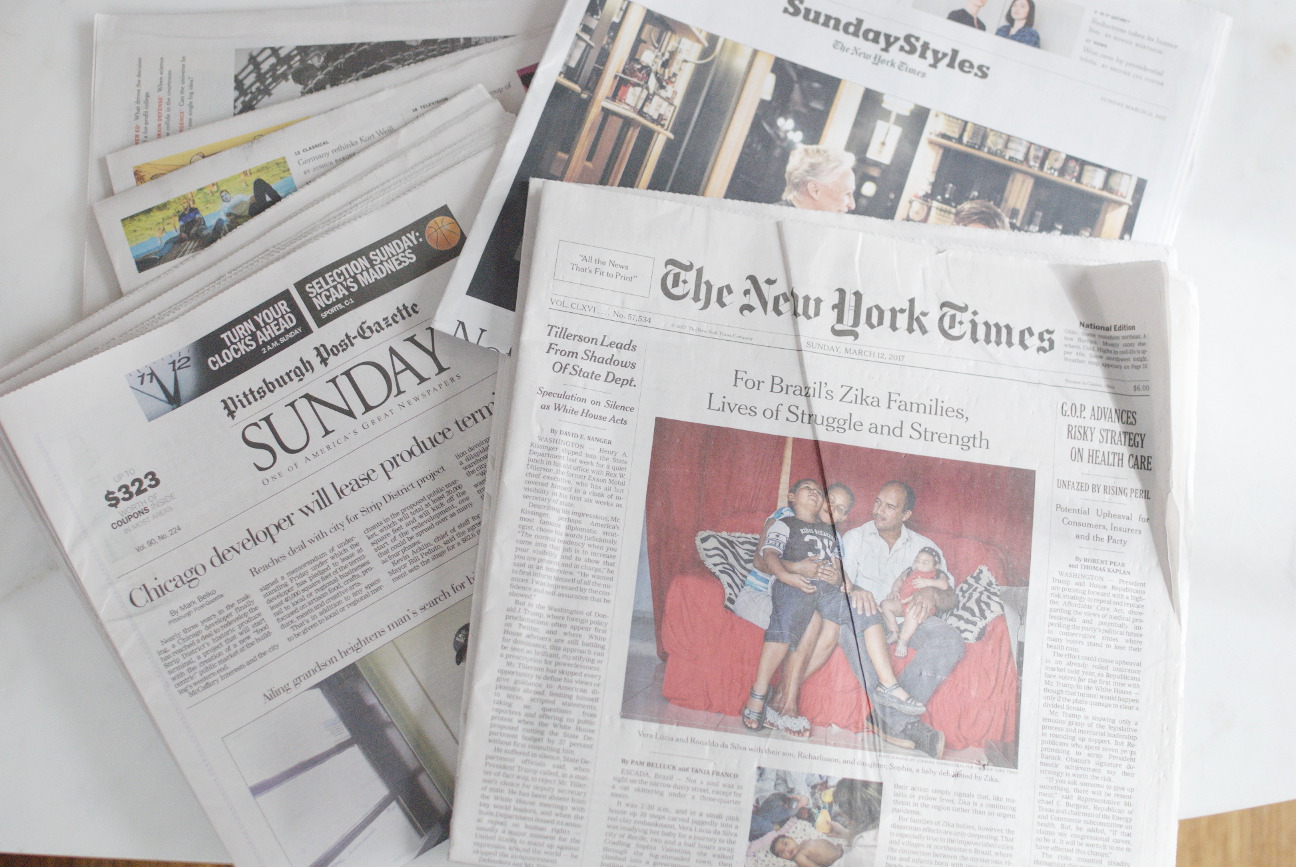:a case for print:

Most of us are fully aware of the seismic shift in the newspaper industry over the last 20 years. Rather than reading the newspaper, we get our news online, oftentimes from curated feeds on Facebook or Twitter. For years, I have been the person who gathers her news from the internet. It’s fast, convenient, timely. It’s consumable in a way that newspapers have struggled to keep up with.
But over the last few years, as newsrooms are being cut to the bone, I’ve realized just how dangerous the decline of journalism really is. And for the last year especially, I have been shocked at how simple it has been for unsubstantiated news sources to infiltrate our everyday conversations. It has become clear to me that good journalism isn’t something simply given to us because we’re citizens of a country where freedom of the press shall be inviolable.
I’m about to sound old but I remember a time when we would look to our journalists to give us the facts. The warty truth behind the perfectly manicured sound bite. It’s easy to blame social media for the downward spiral of good journalism. But the swirl around the drain began long before we were tweeting our headlines. On June 1, 1980, Ted Turner launched CNN, giving birth to the 24-hour news cycle. The expectation for news on-demand sprouted from this development and with it came a growing pressure on reporters to scoop the scoop. The revenue structure for newsrooms began to shift as well. If you’re not the first source with the story, people won’t show up and if people don’t show up, they aren’t seeing your advertisers and if they are seeing your competitor’s advertisers, guess where the advertisers will go. But we were all naive enough to believe traditional news production was untouchable. People will always be willing to spend a little money to get the truth because they can trust their reporters to give it to them straight. Turns out, we had too much faith in people.
This is all quite over-simplified (and really not fully baked in my head). Did we not have a few trusted journalists betray us? Is it not traditional media’s fault for dismissing the digital competition? I don’t know. It’s probably a big mishmash of all of it.
What I do know is we need journalists. As citizens, we cannot continue to sit idly by while newsrooms are shuttering. Journalism isn’t part of the government but it IS part of our country’s checks and balances. Without it, the dark corners of our democracy will grow. And for me, it wasn’t enough to tag publications in a post about how we need better journalism. If I want better journalism, I must support it completely. And that means paying for it. If we want journalists to be accountable to the people, then the people need to be the source of journalists’ revenue. Right?
So here I am, making a case for print. Let me give you three reasons to subscribe to your local newspaper:
Local news sources are the people’s voice. Many national stories break at the local level. Consider the Flint, MI water crisis. If not for the local media continuing to press and ask why this was happening, the story may have gone away and people would have continued to be hurt.
We are more likely to retain information when we read print than when we read digital. Ok, the study that supports this notion was focused on reading books, not necessarily newspapers. But my experience is that I take more time with the newspaper than an online story. I’m less distracted (hello email notification). And having that tactile experience with what I’m reading makes it more personal.
It’s totally retro. And will make you look super smart. Bonus - You will get super smart about local issues, events and initiatives that really matter to your day-to-day life.
I hope you consider supporting your own local newspaper. Fighting for journalism matters. Now more than ever. Our dollars can be a pretty powerful weapon in the battle to keep the free press inviolable.







